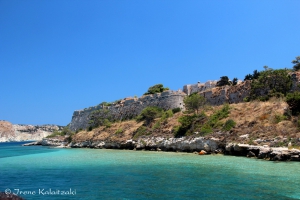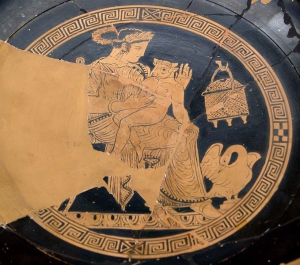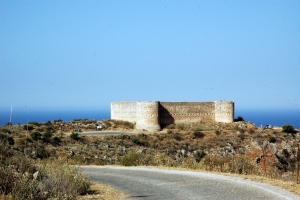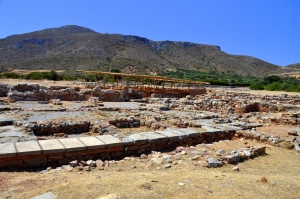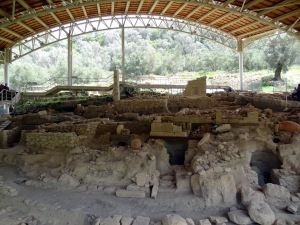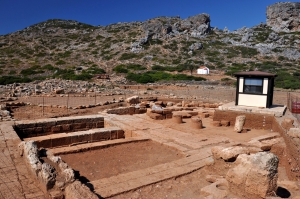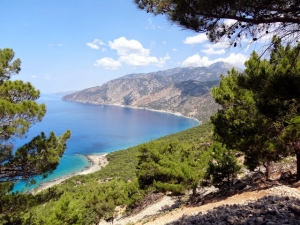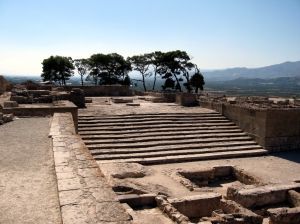Souda is the name of the small island that stands like a guard in the entrance of the gulf of Souda., a natural harbor protected by the high mountains the east of Chania, on the northeast side of the port of Chania.
One of the most famous legends of Cretan mythology is that of the Minotaur and his fight with Theseus in the dark maze. This myth is presented in this article. According to the legend, the king of Knossos, Minos, once asked Poseidon to send him a sign to indicate that he was the only one that should be the king of Knossos (against his brother Radamanthys).
The fort of Koules is located in Paleokastro area, 12km east of Chania, near the village of Kalami and close to the ruins of ancient Aptera. The fort was built by the Turks after the Cretan Revolution of 1866, in the framework of a program to control Crete from a network of towers.
Rousolakos is located 91km southeast of Agios Nikolaos, right next to the beach of Hiona. Here, the archaeologists have discovered an important town of Minoan Crete covering an area of more than 50 acres, which flourished particularly at the end of the Minoan Age till 1450BC.
Ancient Eleftherna is located 25km southeast of Rethymno, close to the Monastery of Arkadi. The town is the most important archaeological site in the prefecture of Rethymno, which has not fully been excavated and it is expected to give archaeologists many more discoveries. The first organized excavations here started in 1985 by the University of Crete.
The ancient town of Falasarna (or Phalasarna) is located at the west base of the peninsula Gramvousa and was one of the major towns of Crete during the Hellenistic Era. The city was famous for its port, the only natural harbor in western Crete, built in a small lagoon.
Crete in antiquity and mythology was known with various names that were given, either for the sake of the grounds, of its people, or for another cause. Aeria, Chthonia, Dolichos, Telchinia, Idaean, Makaria, Kouritis, Kaftor and Crete are few.





